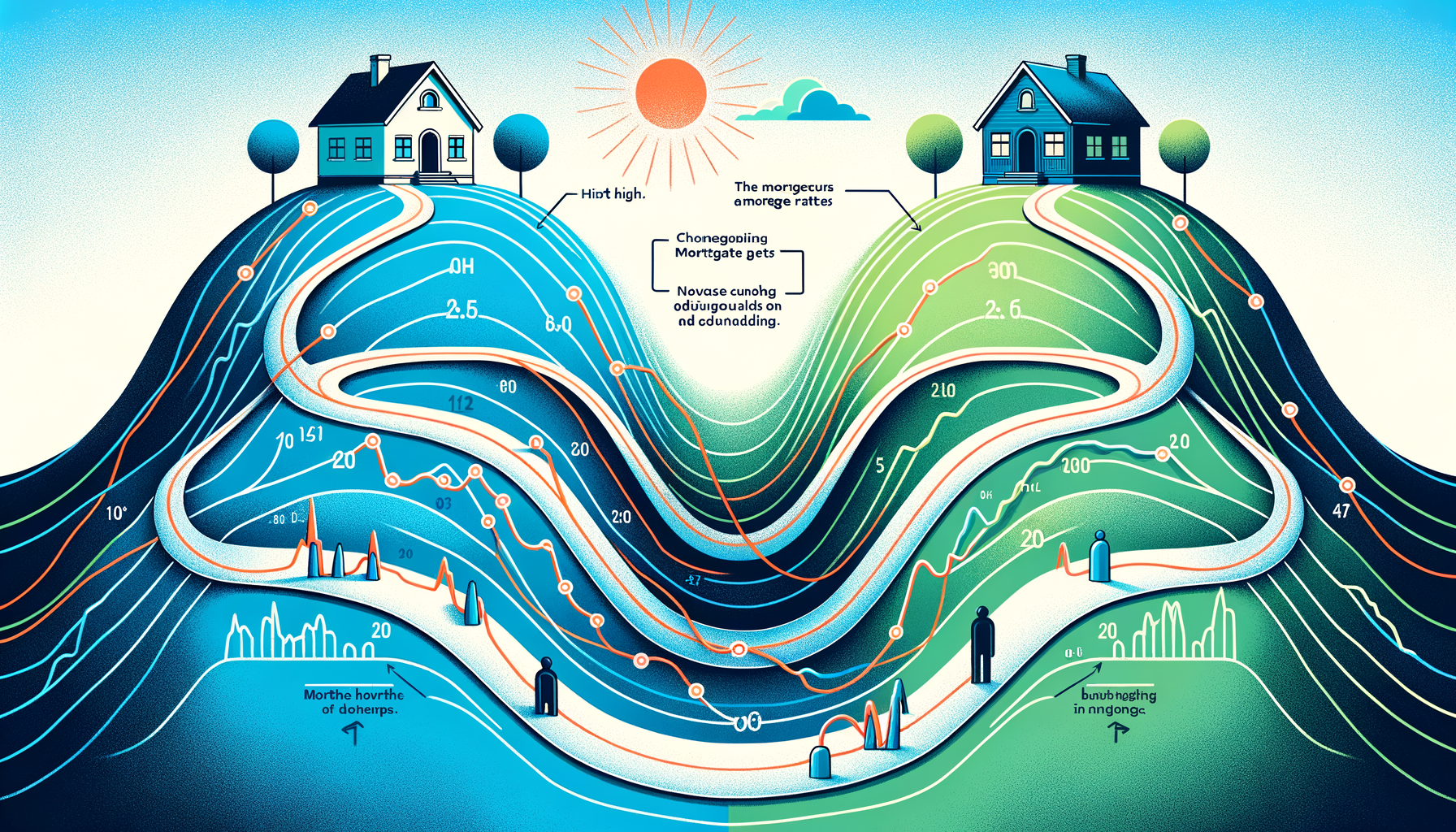“Understanding the Current State of Mortgage Rates: An In-Depth Analysis”
Mortgage rates, with their ability to fluctuate, seemingly as quickly and as unpredictably as other aspects of the economy, can have a tremendous impact on potential homeowners. Discussions about the ebb and flow of interest rates frequently draw both investors and folks interested in buying a home. These folks wish to capitalize on great deals or smartly plan their subsequent house purchase.
The relationship between mortgage rates and bond markets is quite essential here. Bonds, especially those guaranteed by the U.S. government, such as Treasury bonds and mortgage-backed securities (MBS), typically conform to a similar overarching trend. Simply put, when bonds are thriving, mortgage rates are more likely to fall, offering potential homeowners lucrative deals for their homes.
Lately, the bond market has experienced extreme volatility. At the end of February, bonds began to enter a period of quick and significant declines, which, by the usual standard, should lead to increased mortgage rates. Those familiar with financial trends understand the pendulum swings of the market – periods of decline can be followed by periods of rapid improvement, and vice versa. While this might sound intimidating to those unfamiliar, it merely denotes the ebb and flow of the economic cycle.
Just as anticipated, a weak bond market characterized the early days of March. Paradoxically, instead of a rise, mortgage rates decreased, creating confusion among market watchers. Few could explain why the mortgage rates did not follow the expected pattern. Nevertheless, for the homeowners and potential buyers, this meant an opportunity for more appealing mortgage deals.
Later, a surprising development occurred: bond yields stabilized, stopped plummeting, and even started to show signs of modest improvement. Yet, mortgage rates, which were anticipated to catch up with the earlier bond yield fall, have disregarded the pattern altogether and, perplexingly, continued to decline.
This downward spiral of mortgage rates has created an exciting and unpredictable market for potential homeowners and investors alike. The unconventional trend between the movements of the bond market and mortgage rates that was observed would typically signal a red flag for individuals on the lookout for mortgage opportunities. Nevertheless, the situation may still inspire optimism.
The disconnection that we saw between the bond market and mortgage rates over a week isn’t unheard of. There are instances where this ‘delayed reaction’ occurs. Think of these situations like stored energy. The bond yields fell, but the mortgage rates held steady, almost like compressing a spring. Once bond yields begin to recover, that stored energy releases, and mortgage rates fall, almost playing ‘catch up’ to where they would have fallen if they had directly tracked the bond yields.
However, this ‘elastic band’ theory does not always hold. Sometimes the disconnect between mortgage rates and bond yields can persist for longer periods. The mystery, therefore, of how long this disconnect between the behavior of mortgage rates and bond market trends will last is difficult to solve without considering several factors that affect this relationship.
One is the cost for lenders to maintain the necessary liquidity. In other words, lenders need to ensure they have enough money on hand to keep the wheels of their businesses turning. Volatility in the bond market can drive up these costs, which can incline lenders to keep mortgage rates a bit higher, despite a fall in bond yields.
Another factor is the lenders’ capacity issue. When interest rates are low, more people look to either buy homes or refinance their current mortgages, meaning lenders can have more potential clients than they’re able to service. Rather than hiring more staff to accommodate this surge, they might opt to keep mortgage rates a bit higher, reducing the demand for their services to a level they can manage.
What can mortgage-rate watchers do in such a perplexing situation? First, it’s helpful to remember that forecasting the exact behavior of financial markets is tricky. So it’s wise to refrain from hurried decisions based on a transient trend and instead make a well-informed choice based on careful evaluation of the market and one’s own financial resources and goals.
That said, market observers should not lose sight of the bigger picture. Despite the inconsistencies, mortgage rates are still at historic lows. This might be the perfect time for potential buyers to anticipate the chances of rates moving even lower.
For homeowners contemplating refinancing their properties, this situation is just as rich in potential. Lower rates could provide an opportunity for them to reconsider their existing agreements for a better hand in the current climate.
In conclusion, the correlation between mortgage rates and bond markets remains integral in helping potential homeowners and investors navigate the mortgage terrain. It’s essential to stay updated on these market trends. Despite intermittent intermissions in consistency, these patterns, volatile as they may be, provide significant insights for making prudent decisions. As much as the current scenario may seem turbulent, it offers quite a few opportunities that keen-eyed observers and savvy decision-makers can capitalize on.

